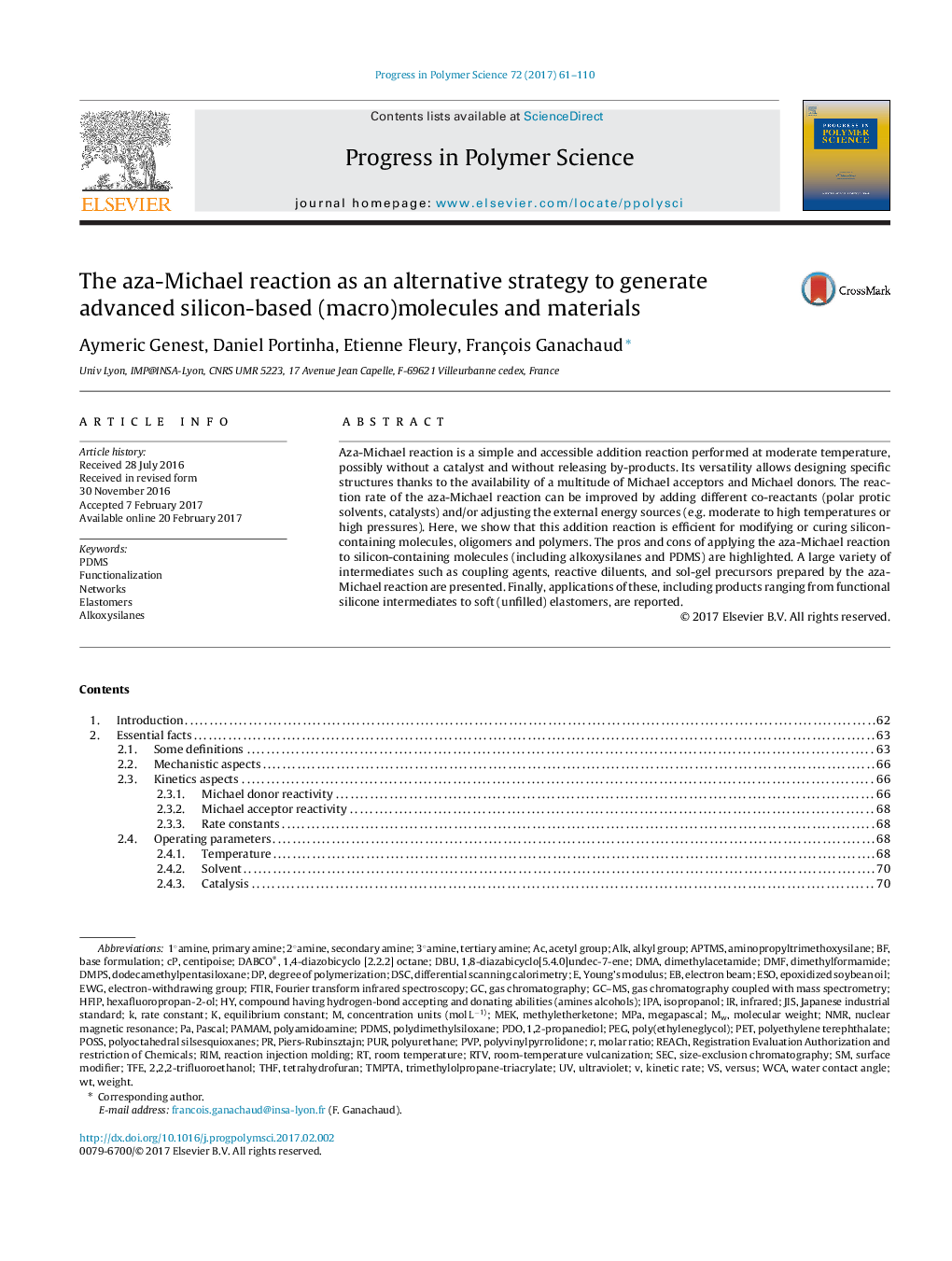| Article ID | Journal | Published Year | Pages | File Type |
|---|---|---|---|---|
| 5207876 | Progress in Polymer Science | 2017 | 50 Pages |
Abstract
Aza-Michael reaction is a simple and accessible addition reaction performed at moderate temperature, possibly without a catalyst and without releasing by-products. Its versatility allows designing specific structures thanks to the availability of a multitude of Michael acceptors and Michael donors. The reaction rate of the aza-Michael reaction can be improved by adding different co-reactants (polar protic solvents, catalysts) and/or adjusting the external energy sources (e.g. moderate to high temperatures or high pressures). Here, we show that this addition reaction is efficient for modifying or curing silicon-containing molecules, oligomers and polymers. The pros and cons of applying the aza-Michael reaction to silicon-containing molecules (including alkoxysilanes and PDMS) are highlighted. A large variety of intermediates such as coupling agents, reactive diluents, and sol-gel precursors prepared by the aza-Michael reaction are presented. Finally, applications of these, including products ranging from functional silicone intermediates to soft (unfilled) elastomers, are reported.
Keywords
RTVdimethylacetamidePDODBUHFIPIPATFEJISDMPSWCAMPAEWGPOSSAPTMSESOTMPTAAlkoxysilanesReaction Injection MoldingmegapascalDSCSECPVPTHFDMAPDMSDMFnuclear magnetic resonance1,2-propanediol1,8-Diazabicyclo[5.4.0]undec-7-ene2,2,2-trifluoroethanolGC–MSALKPrimary amineTertiary amineSecondary amineAminopropyltrimethoxysilaneacetyl groupUltravioletElastomersSize-exclusion chromatographyIsopropanolTetrahydrofuranNMREquilibrium constantpurVersusdegree of polymerizationRoom temperaturedimethylformamideREACHEpoxidized soybean oilRIMwater contact anglecentipoiseNetworksFTIRFourier transform infrared spectroscopyInfraredMEKYoung’s modulusRate constantKinetic rateMolar ratioWeightMolecular weightSurface modifierPascalPAMAMPETElectron beamPolyamidoaminePolyethylene terephthalatePoly(ethyleneglycol)polyvinylpyrrolidonePEGPolydimethylsiloxanePolyurethaneFunctionalizationDifferential scanning calorimetrygas chromatography coupled with mass spectrometryGas chromatographyAlkyl groupelectron-withdrawing group
Related Topics
Physical Sciences and Engineering
Chemistry
Organic Chemistry
Authors
Aymeric Genest, Daniel Portinha, Etienne Fleury, François Ganachaud,
